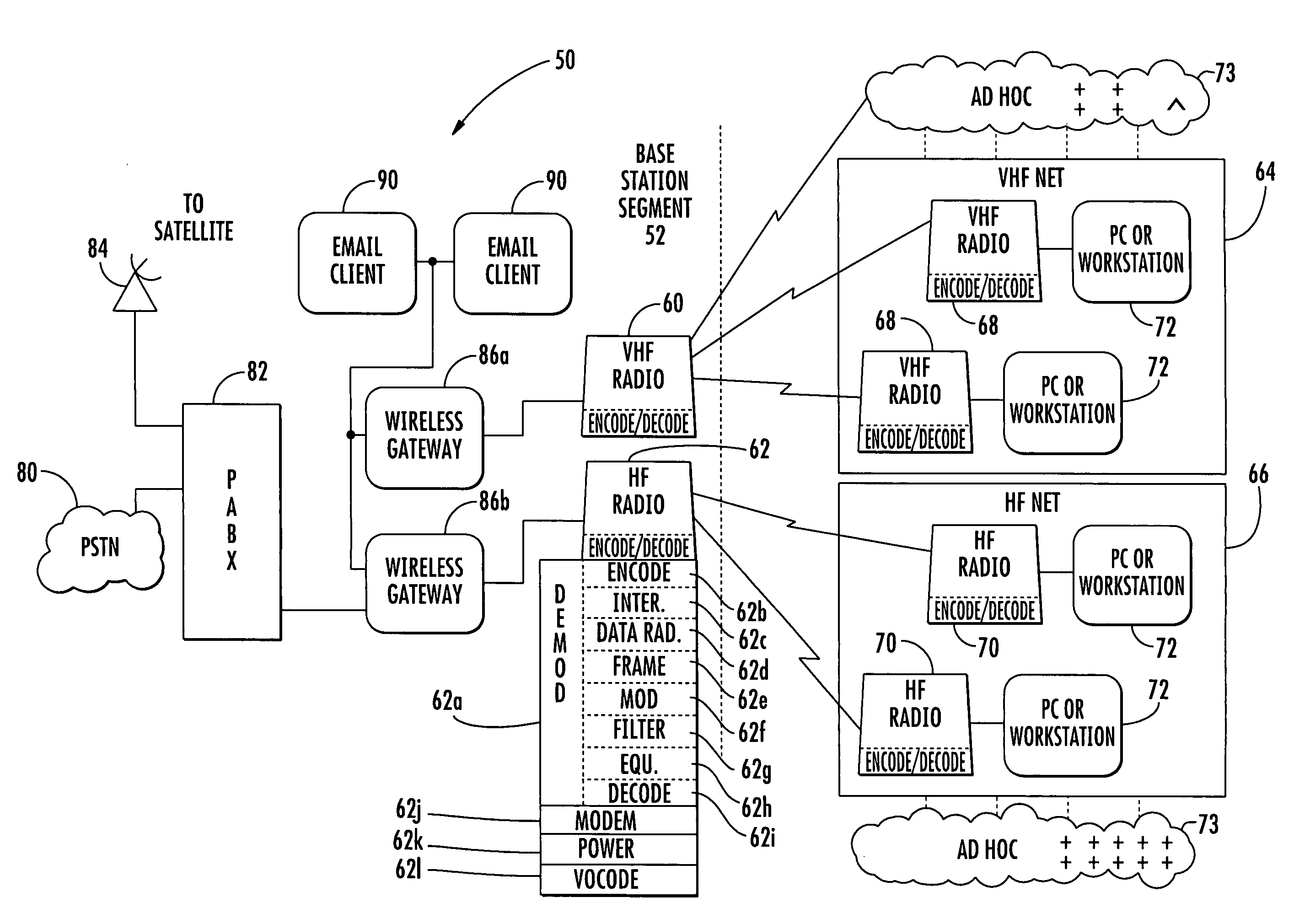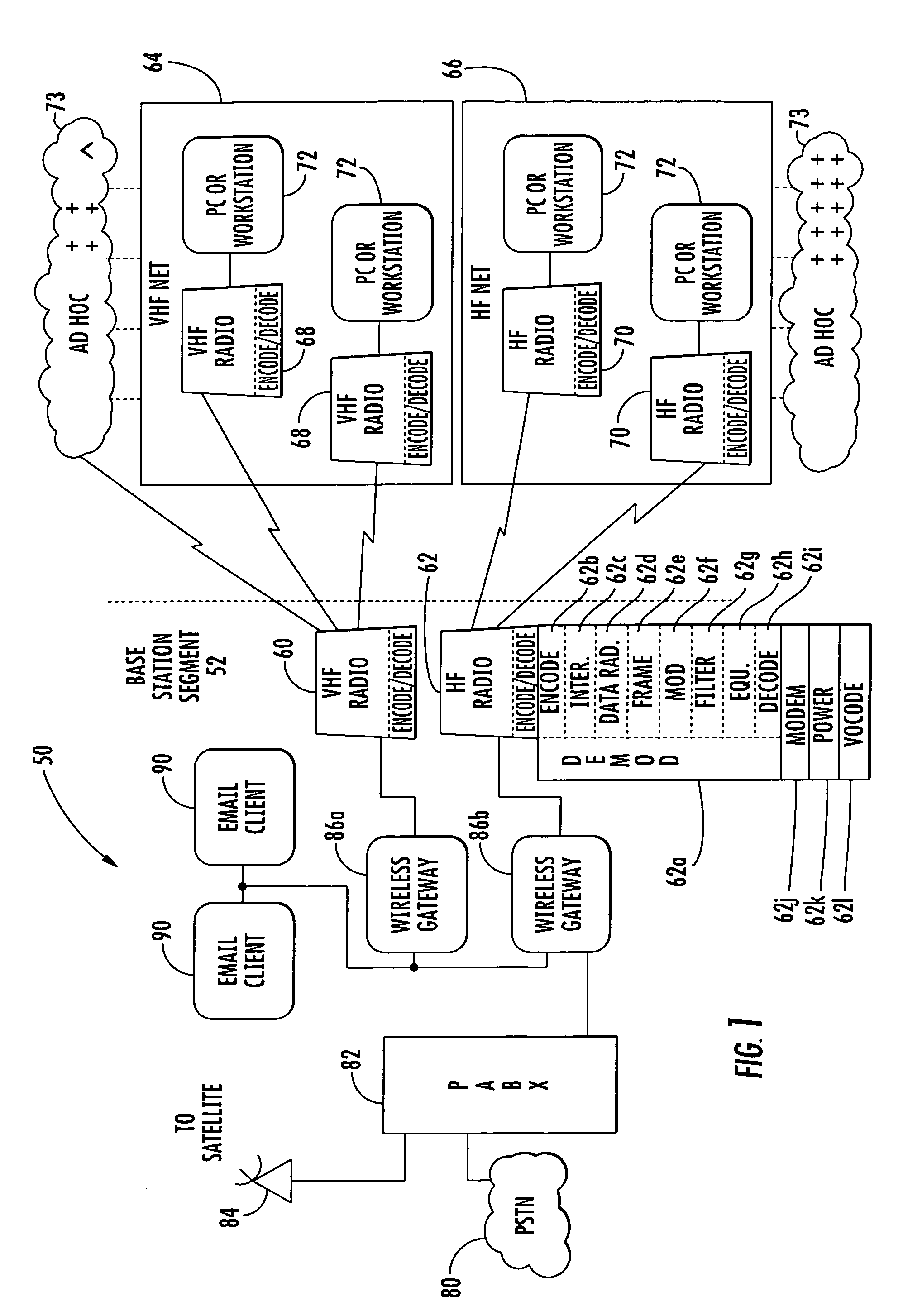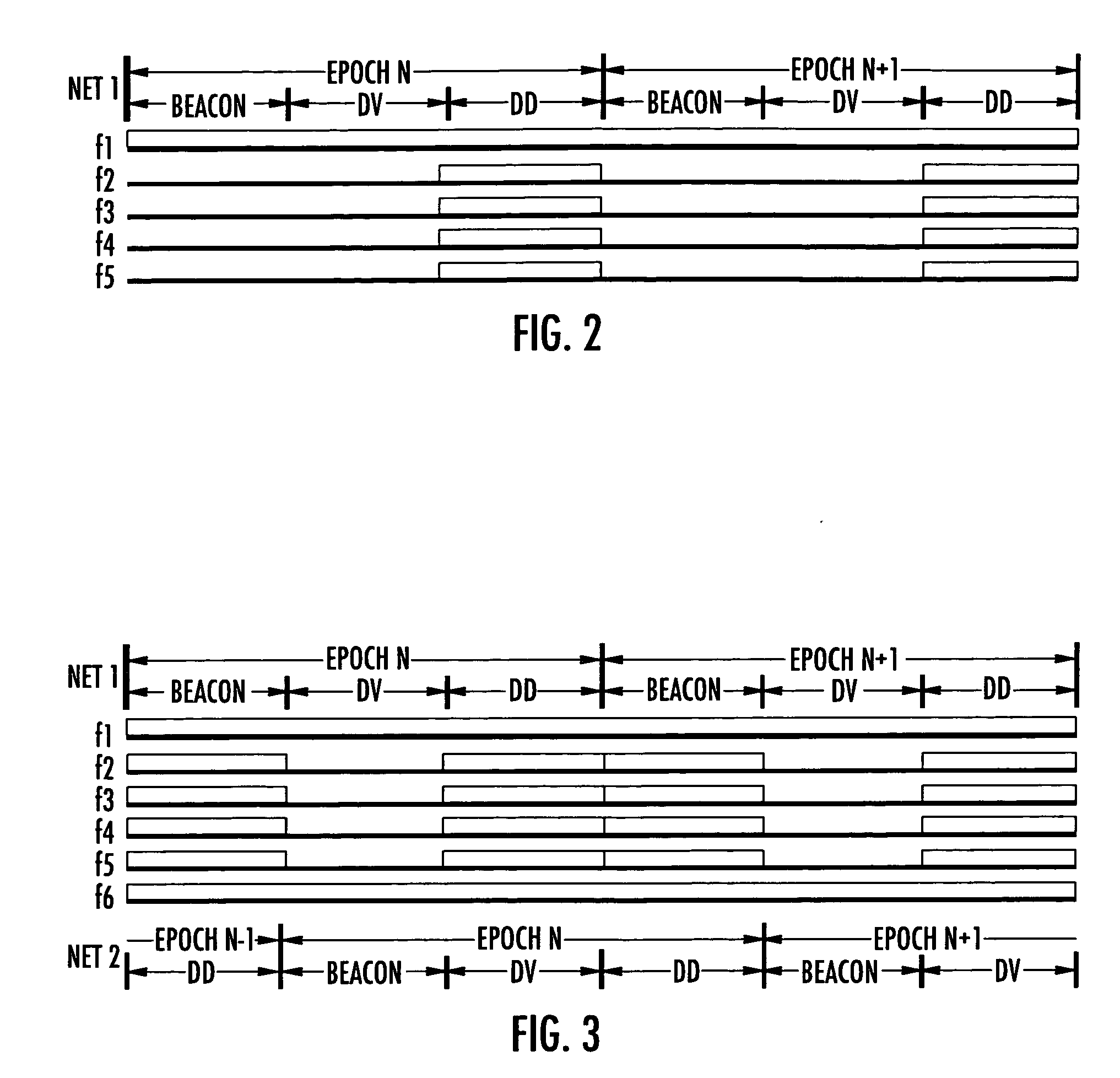System and method for synchronizing TDMA mesh networks
a mesh network and network technology, applied in the field of communication, can solve the problems of secondary frequencies being unused, and large portion or even a majority of the configured bandwidth being wasted
- Summary
- Abstract
- Description
- Claims
- Application Information
AI Technical Summary
Benefits of technology
Problems solved by technology
Method used
Image
Examples
Embodiment Construction
[0016]Different embodiments will now be described more fully hereinafter with reference to the accompanying drawings, in which preferred embodiments are shown. Many different forms can be set forth and described embodiments should not be construed as limited to the embodiments set forth herein. Rather, these embodiments are provided so that this disclosure will be thorough and complete, and will fully convey the scope to those skilled in the art.
[0017]In accordance with a non-limiting example of the present invention, channel wastage can be overcome in a TDMA mesh network communications system by recognizing that a second TDMA mesh network in a non-limiting example can use the unused TDMA secondary frequencies in a first TDMA mesh network for secondary frequency digital data usage. In effect, the system and method can “scavenge” a part of the secondary frequency channels unused by the first TDMA mesh network, thereby reducing channel wastage.
[0018]An example of a communications syst...
PUM
 Login to View More
Login to View More Abstract
Description
Claims
Application Information
 Login to View More
Login to View More - R&D
- Intellectual Property
- Life Sciences
- Materials
- Tech Scout
- Unparalleled Data Quality
- Higher Quality Content
- 60% Fewer Hallucinations
Browse by: Latest US Patents, China's latest patents, Technical Efficacy Thesaurus, Application Domain, Technology Topic, Popular Technical Reports.
© 2025 PatSnap. All rights reserved.Legal|Privacy policy|Modern Slavery Act Transparency Statement|Sitemap|About US| Contact US: help@patsnap.com



